Contents
You Should Know Better Than To Not Wear A Helmet
You don’t need us to tell you that riding a motorcycle without a helmet is a dangerous- and downright stupid- thing to do. However, “downright stupid” is a character trait not privy to a surprisingly large section of the population. And lawmakers are among them.
Until 1998, observed helmet use among Florida’s motorcyclists was nearly 100%. But that changed.
Because on July 1st, 2001, Florida’s universal helmet law was amended to exclude “riders ages 21 and older with insurance coverage providing at least 10,000 US dollars in medical benefits for injuries sustained in a motorcycle crash”.
After which observed helmet use in Florida swiftly declined to 53%. You can already tell what the next paragraph is going to be about.
The motorcyclist death rate jumped up from 30.8 to 38.8 deaths/1000 crashes, a whopping 8 deaths/1000 crashes. The likelihood of death in a motorcycle crash rose to 25% higher than expected after the law change.
Experts estimate that at least 117 deaths could have been avoided during the year following if the universal helmet law had remained in place.
Why The Head Needs To Be Protected While Riding
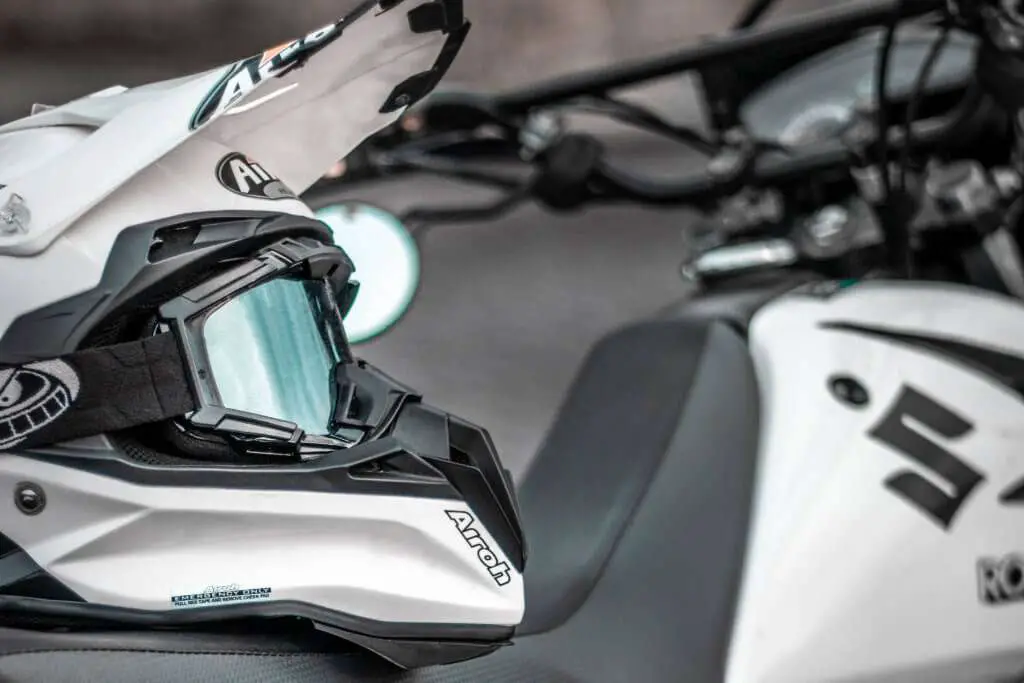
There’s a reason why helmets are so important.
The brain is enclosed within a rigid skull. And the skull is encapsulated by the inner scalp. There is a hole in the underside of the brain through which the spinal cord passes. A tough tissue called the “dura” that adheres to the bones, surrounds the brain. The space between the brain and this tissue contains cerebrospinal fluid that absorbs all mechanical shock.
During a collision, the rider is thrown off the motorcycle, and hits the surface or a hard object. Upon impact, the head’s movement is stopped, but the brain continues to move forward (Newton’s first law, kids) until it strikes the inside of the skull. In major crashes, which often take place at high speeds, the brain sustains enough velocity to rebound and strike the opposite side of the skull. This causes major issues to the system and functioning of the head.
If you don’t wear a helmet, you’re putting yourself at a very high risk of developing concussions, brain contusions and intracranial haemorrhages in different areas of the brain.
How A Helmet Protects Your Head
A helmet reduces the risk of serious head and brain injuries in three ways:
- It reduces the deceleration of the skull via impact absorption. The soft material incorporated in the helmet absorbs some of the impact.
- It divides the forces of the impact over a greater surface area so that they are not concentrated on any particular areas of the skull, reducing the impact as a whole.
- It prevents direct contact between the skull and the impacting object by acting as a mechanical barrier between the head and the object.
Anatomy Of A Motorcycle Helmet
The three functions mentioned above are achieved by combining the safety features of four basic components of the helmet, listed below:
The outer shell is the tough outer surface of the helmet that distributes the impact over a large surface area. It is designed to compress upon collision with a hard object.
The impact-absorbing liner is made of soft, crushable padded material (usually styrofoam). The liner absorbs the shock sustained by the helmet upon collision, making it harder for Newton’s first law to conspire with the asphalt on the road to ruin your brain.
The comfort padding is the soft foam-and-cloth layer that keeps the head comfortable and fits the helmet snugly.
The chin strap makes sure the helmet doesn’t separate itself from your head upon impact..
What Should I Look For In the Best Motorcycle Helmet?
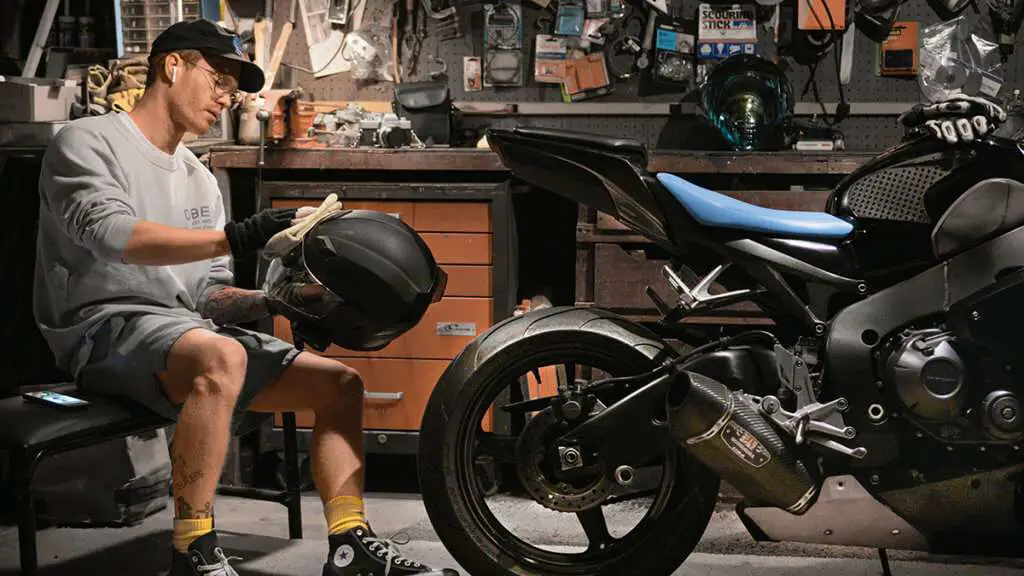
1. Certification
First thing’s first, you should be really careful to check the legality of your motorcycle helmet before buying it. This isn’t just for legality’s sake- helmets having the following certifications come with the guarantee of high safety standards.
i) The D.O.T. (Department Of Transportation) Certification is required for every helmet intended for use on roads in the United States. It involves impact tests, penetration tests, and testing of the retention system of the motorcycle.
While the minimum safety standards required for helmets to pass this test are nowhere near that required for racing conditions, it does cover most types of commuting.
ii) The Snell Certification is issued by the Snell Memorial Foundation – and the standards required to attain this certification subject the helmet to rigorous testing. It is one of the most highly regarded certifications, as the standards are derived from racing conditions as opposed to regular riding conditions.
Keep in mind that the Snell Memorial Foundation is a non-profit organization and not affiliated with any government organizations- the certification is voluntary.
It is generally considered to be superior to the D.O.T certification.
iii) The United Nations Economic Commission For Europe (Ece) Standard is a certification recognized by well over 50 countries, including most European countries. It is also accepted by most racing organizations. While not as well-known in the U.S. as the other two certifications, its testing is the most rigorous on this list.
For instance, it requires that the manufacturer send a batch of 50 production versions of the helmet, each of which will be independently tested.
2. The Right Fit
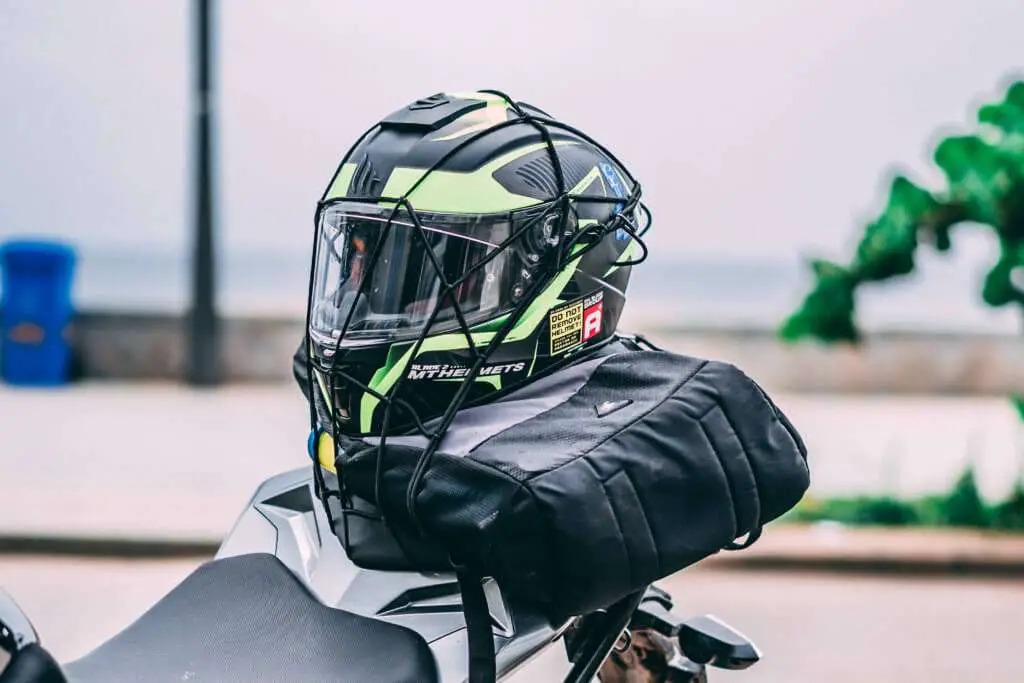
After checking the legal status, your next priority is to find a helmet with the right fit.
If You’re Ordering Your Helmet Online
Measure the circumference of your head, starting right above your eyebrows. Finding the
measurement is critical because each manufacturer has distinctions with different sizings.
What is large for one brand will be extra large for another.
After you find your measurement, carefully compare it with the measurements corresponding to different sizes listed on the merchant/ website displaying the helmet.
When Trying A Helmet On For The First Time
A helmet that is too loose runs a risk of slipping off upon impact. A helmet that is too tight is going to make you uncomfortable and hamper the focus of your riding.
Try the helmet on with the chin strap. Insert two fingers between the strap and the bottom of your chin- the gap should be just wide enough to fit them. Wear it for a while until you get the feel of it. Move it around with your hands. Your cheeks should move with the helmet, but the helmet itself shouldn’t rotate while you figure it out with your hands.
While testing with the chin strap on, look down toward your chest. Try to push the back of the helmet upward- if it goes really up, that means it’s too loose. Try with the next smallest size.
Repeat until you get a perfect fit.
3. Figure Out What Type Of Helmet You Want
The kind of helmet you require depends on what you’re riding, how you’re riding it, and where you intend to ride it.
There are 5 major classifications for motorcycle helmets, one of which will suffice for the answer to all three questions mentioned above. These are:
The Full Face Helmet
The full-face helmet makes sure your head, neck, chin, and jaw are safe. The latter is particularly important to note- because the defining feature of a full-face helmet is the inclusion of a chin bar.
Full face helmets suit pretty much all types of riding- from racing to long, leisurely tours to everyday commutes. But there are modifications within full-face helmets to suit different kinds of rides.
For example, safety requirements for high speed riding conditions beget helmets with a chin bar placed above average height, and a visor angled towards the top of the helmet. This is because you’re going to ride crouched on your bike.
However, you sit upright when not riding fast. Which is why touring helmets have a design with a lower chin bar, and a visor opening that is more straightforward..
Most of these helmets come with provisions for ventilation. Many full face helmets offer the option to close the ventilation in colder seasons.
Modern helmets come with increasingly impressive modifications, including intercoms and tinted visors.
Our Recommendation Full-Face Motorcycle Helmet: SHOEI RF-1100
Certification: DOT and Snell M2015 approved
Features
- Aerodynamic Shell Design
- AIM+ Shell is ultra lightweight, rigid and resilient
- Tool-less face shield removal and installation
- Pre-set lever can easily lock the shield in place
- Variable Ventilation System
Modular Helmets
Modular motorcycle helmets are also known as flip-up helmets- because you can flip both the chin bar and visor up (sometimes in one movement). Because of this, the anatomy resembles somewhat of a cross between an open helmet and a full-face helmet. Modular helmets also come with a visor for shielding your eyes against the sunlight.
They generally weigh slightly more than full face helmets due to the flip-up mechanism incorporated into the material. As a result of which the safety is slightly compromised when compared to a full face helmet, but not nearly enough to be significant.
That being said, modular helmets are not suitable for racing conditions (more organizations won’t allow you to wear them due to stringent safety measures) but still offer more than adequate safety for all other types of commute. Just like full face helmets, these helmets also come with provisions for modifications like bluetooth speakers.
Our Recommendation Modular Motorcycle Helmet: Shark Evoline 3 Mezcal Helmet
Certification: DOT approved
Features
- Lexan Polycarbonate shell
- Optimal comfort for those wearing glasses
- Auto-Up system unites chinbar and main shield in movement
- Sharktooth Ready
- Integrated drop down sun visor
Open Face Helmet
Open face helmets protect the top, back, and sides of your head. Your face is “open” to external elements. The lack of a chin bar is its primary defining characteristic.
And the main safety concern, especially relative to full face helmets.
That being said, open face helmets provide the same level of protection as full face helmets do to the areas they cover. The material used in these structures is almost identical, save for the chin bar. Which also results in a lower weight relative to other helmets.
Full/ partial visors are included for sunlight exposure.
Open face helmets have the lowest price point in this list.
We highly recommend against wearing these helmets when riding at high speeds. City commutes and short distances are fine.
Our Recommendation for Open Face Helmet: ScorpionExo Covert Helmet
Certification: DOT approved
Features
- Advanced Polycarbonate shell
- Anti-fog sun visor with internal tint
- Night-time optimized visor
- Dual density EPS
- Easily removable front mask
- Removable ear flaps
- Double D-ring chin strap
Off-Road Helmet
Off-road helmets have a very different design when compared to the other helmets on this list. Noticeably, the inclusion of a larger visor and a more prominent chin bar (for airflow’s sake). They often don’t come with shields or visors, so a pair of riding goggles will come in handy.
These helmets are very lightweight, especially for their size- which is why your head and neck will thank you.
Off-road riding conditions often require extra gear more appropriate to the off-road environment. So take care to make sure the helmet suits the rest of your gear before you make the purchase.
Our Recommendation for Off-road Motorcycle Helmet: Arai VX-Pro 4 Helmet
Certification: DOT and Snell approved
Features
- Shell comprised of complex Laminate construction
- Facial Contour System for a fantastic fit
- Adequate ventilation in each part of the helmet
- The peak facilitates forehead cooling and reduction of “lifting”
- Dry-Cool interior lining that is removable and washable
Dual Sport Helmet
No products found.
No products found.
Dual Sport helmets have an exterior similar to that of off-road helmets and an interior similar to that of full-face helmets. Which is why these helmets can be worn for both on and off-road riding, and also why they’re called “dual” sport helmets.
They come with a larger visor than off-road helmets, and you can usually flip it up if you find riding goggles more comfortable. The lower chin bar allows for reduced wind noise but at the cost of reduced airflow.
Our Recommendation for Dual Sport Helmet: No products found.
Certification: DOT and ECE approved
Features
- Lightweight carbon-aramid-fiberglass shell
- Can remove chin guard without tools
- Panoramic, pinlock-ready visor
- The peak facilitates reduction of “lifting”
- Double-D strap

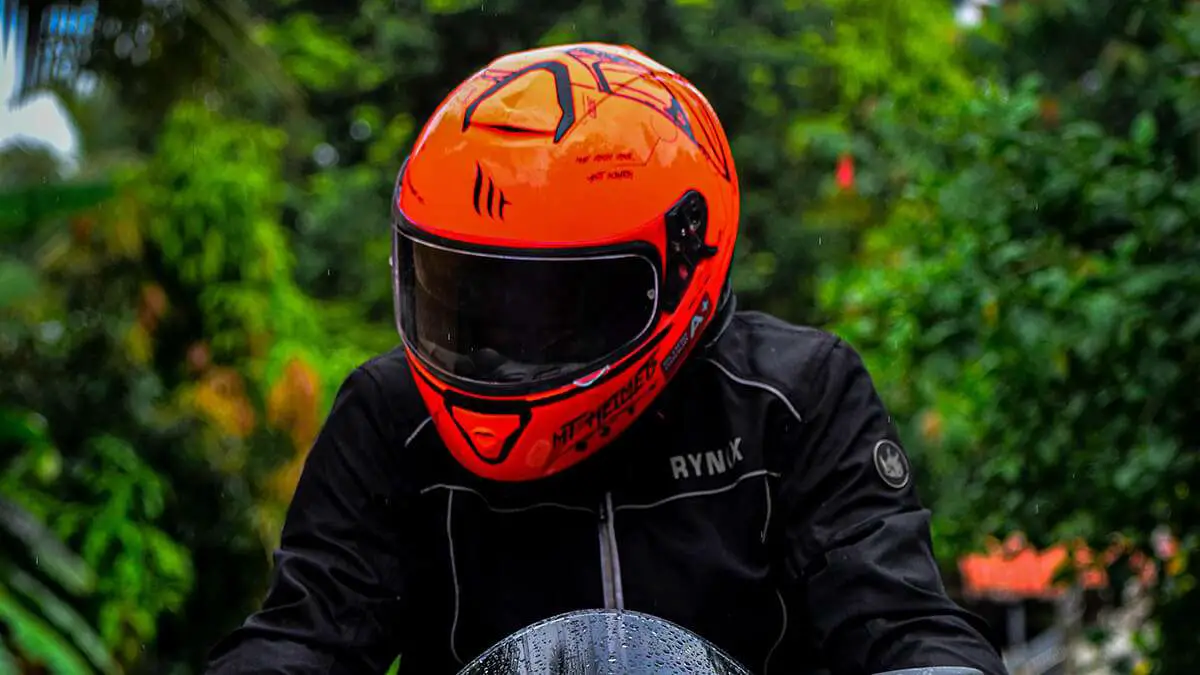
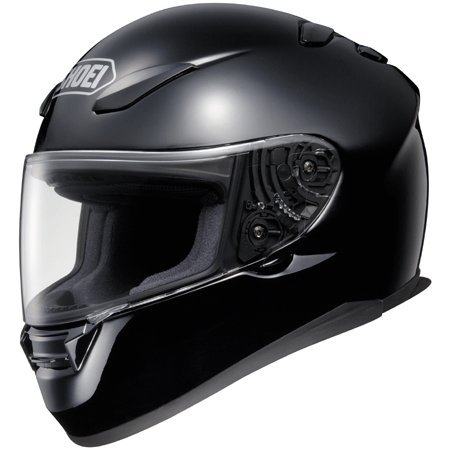
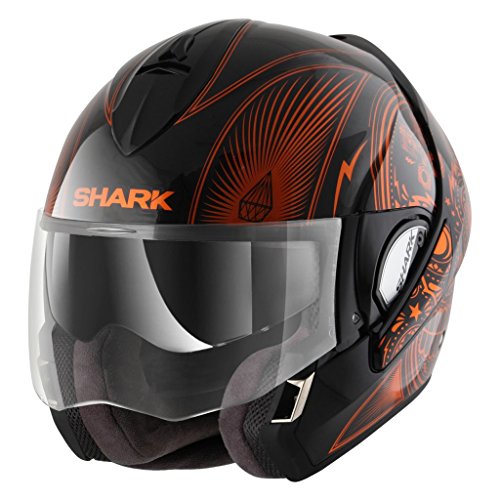


 Improved Riding: The Quietest Motorcycle Helmet
Improved Riding: The Quietest Motorcycle Helmet  ILM Full Face Motorcycle Helmet Review Round-Up: A Helmet I Can’t Possibly Recommend
ILM Full Face Motorcycle Helmet Review Round-Up: A Helmet I Can’t Possibly Recommend 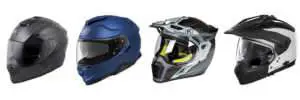 Four helmets in 2019 Reviewed
Four helmets in 2019 Reviewed 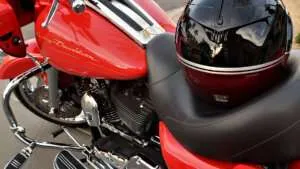 The 5 Best Full-Face Motorcycle Helmets With Bluetooth
The 5 Best Full-Face Motorcycle Helmets With Bluetooth